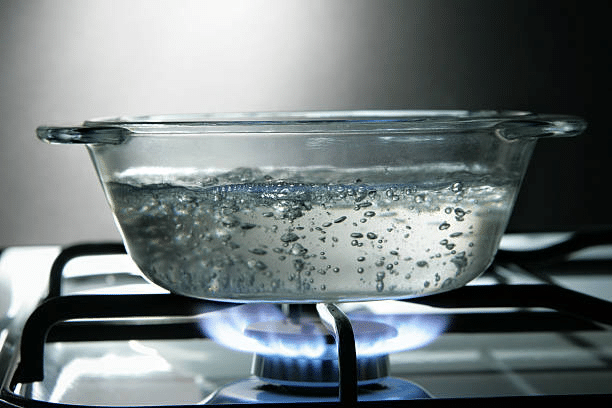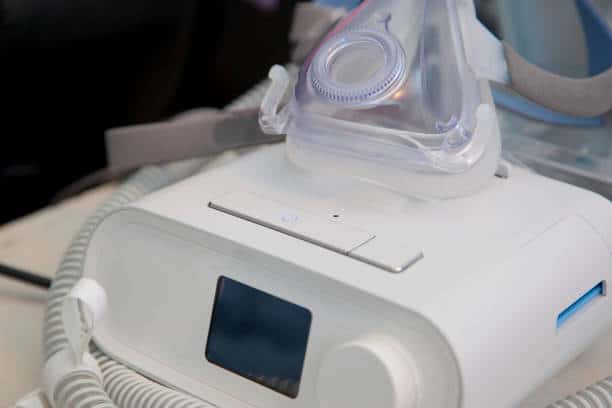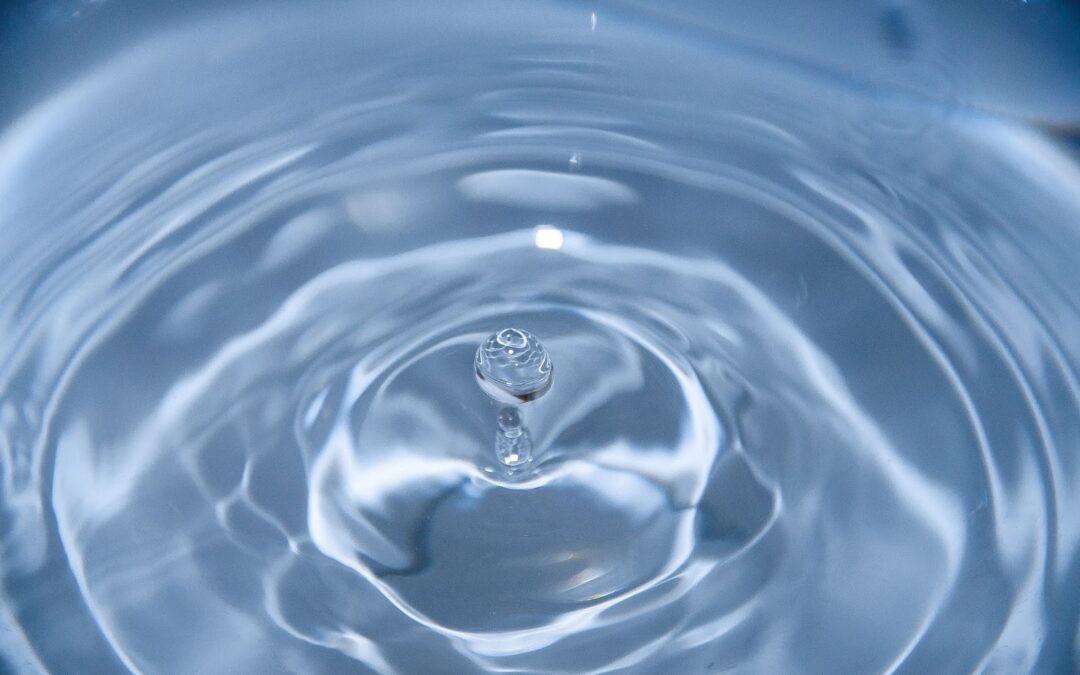Understanding the differences between distilled vs purified water is crucial when considering the impact of water quality on human health. High-quality water is a cornerstone of wellness, as contaminants in water can lead to a range of health issues, from minor skin irritations to more serious conditions like gastrointestinal diseases and, in extreme cases, cancer.
Distilled and purified water are two common water types used for drinking, cooking, and other purposes. While they are both forms of treated water, they differ in how they are processed and the impurities they remove.
In this article, we will explore the differences between distilled and purified water and which might be better for different needs and preferences.
Distilled Water: Purification, Pros, Cons, and Uses

Many people choose to drink distilled water because of its high level of purity, as the distillation process effectively removes all contaminants and minerals from the water.
Distilled water has undergone a specific purification process to remove impurities and minerals. The distillation method involves boiling water to create steam, which is then collected and condensed into liquid form.
Here are the steps involved in the distillation process:
- The water is boiled in a container, creating steam.
- The steam rises and is collected in a separate container.
- The steam is then condensed into liquid form, resulting in distilled water.
Pros
- Distilled water is free of toxic chemicals, heavy metals, and other contaminants that may be present in tap water or other water sources.
- It is an excellent choice for individuals who want to remove all impurities from drinking distilled water.
- Distilled water can be used for various purposes, including medical facilities, steam irons, aquariums, and car cooling systems.
Cons
- The distillation removes all minerals from the water, including healthy ones that benefit the body.
- The lack of minerals can lead to a bland taste, which some people may find unappealing.
- There may be better choices than distilled water for individuals who need mineral supplements in their diet.
Usage
When considering distilled vs purified water for various applications, the purity of distilled water makes it a superior choice in many scenarios:
- Cosmetic use: Distilled water is free from minerals and other impurities that can interfere with the consistency and efficacy of cosmetic products. It also has a neutral pH level, making it ideal for facial sprays, toners, and other skincare products. Distilled water is also used in hair products to help prevent mineral buildup and promote healthy hair growth.
- Vehicle cooling systems: Using distilled water in a car’s cooling system helps prevent mineral buildup and corrosion, which can cause the system to malfunction. It is also an excellent choice for racing cars or high-performance vehicles, where any impurities in the cooling system can lead to overheating and engine damage.
- Medical usage: Distilled water is often used in medical facilities for procedures that require sterile water, such as diluting medications, preparing IV solutions, and rinsing medical equipment. The distillation process removes any bacteria, viruses, or other contaminants that may be present in tap water, ensuring that it is safe for medical procedures.
- Aquariums and fish tanks: Distilled water is an excellent choice for aquariums and fish tanks because it contains no toxic chemicals or minerals that may harm fish or other aquatic life. It is also an ideal choice for sensitive species that require a specific pH level or water hardness.
- Food industry: Distilled water is used in the food industry to create various products such as sauces, soups, and beverages. The absence of minerals and other impurities in distilled water ensures that the final product is of high quality and free from any off-flavors or odors caused by tap water contaminants..
Purified Water: Methods, Pros, Cons, and Uses

Purified water is a type of water that has gone through various purification methods to remove impurities and contaminants, but is it safe to drink purified water? Let’s find out.
Here are some standard techniques used to purify water:
- Reverse osmosis: This method uses a semipermeable membrane to remove dissolved solids, ions, and impurities.
- Distillation: This process involves boiling water and collecting the steam in a separate container, leaving behind contaminants.
- Ion exchange: This method uses resin beads to exchange harmful ions in the water for harmless ones.
- Activated carbon filtration: This process uses activated carbon to absorb impurities and contaminants.
Pros
- Removal of toxic chemicals, pollutants, and metals.
- Better taste and odor compared to tap water.
- Consistent water quality.
- Suitable for medical facilities and equipment, such as CPAP machines.
Cons
- Removal of healthy minerals, which may require mineral supplements for adequate intake.
- Flat taste compared to natural spring water.
- Dependence on plastic bottles or expensive purification systems.
- Environmental concerns regarding plastic waste.
Usages
- Watering plants and gardens: Using purified water to water plants and gardens can help prevent the buildup of toxic chemicals and minerals in the soil, which can negatively impact plant growth and health. Additionally, some plants are sensitive to certain minerals and chemicals in tap water, so purified water can help prevent damage or stunted growth.
- Cleaning and disinfecting surfaces and equipment: Purified water can be used for cleaning and disinfecting surfaces and equipment because it contains no harmful chemicals or minerals that can leave residue or cause damage. It’s also a preferred choice in industries where cleanliness and sanitation are critical, such as hospitals and food processing facilities.
- Cooling towers and air conditioning systems: Purified water is often used in cooling and air conditioning systems to prevent mineral buildup and corrosion. Minerals and impurities in regular tap water can accumulate in these systems and reduce their efficiency or cause damage.
- Filling swimming pools and spas: Purified water is commonly used to fill swimming pools and spas to ensure that the water is clean, clear, and safe for use. Chlorine and other chemicals are still needed to maintain the proper pH and sanitation levels. However, starting with purified water can help prevent the buildup of minerals and impurities that can cause problems.
- Firefighting and emergency response: When clean water is scarce, firefighting and emergency response might employ purified water. Because purified water doesn’t contain harmful chemicals or minerals, it can be used safely when other water sources are contaminated.
What are Their Differences?
Distilled water and purified water are two common types of water used for different purposes. Here are some key differences between the two:
Purity Levels
Distilled water is considered the purest form because it is produced by boiling water and then condensing the steam back into a liquid form, leaving behind any impurities. Distilled water contains 0% TDS, a measure of dissolved minerals and compounds. Depending on the purification procedure, purified water may contain trace minerals and contaminants.
Taste
One of the main differences between distilled and purified water is its taste. Because distilled water has no minerals or chemicals, it has a bland taste that some people find unappealing. Purified water may taste more natural because it still contains minerals and trace components, depending on the purification procedure.
Common Uses
In medical, laboratory, and cosmetic processes, distilled water is utilized to replace minerals and compounds. It prevents mineral buildup and corrosion in automotive cooling systems, steam irons, and aquariums. Purified water is utilized in bottled water, pharmaceuticals, and electronics, as well as for drinking and cooking.
Distilled water is the purest form of water and is often used in medical and industrial applications, while purified water is a more commonly used form of water that undergoes various purification methods to remove contaminants and is suitable for a range of purposes.
Distilled Water and Purified Water for CPAP Machines

Continuous Positive Airway Pressure (CPAP) machines use a humidifier to provide moisture to the air delivered to the patient. It is important to use distilled water in the humidifier to prevent mineral buildup and bacterial growth, which can cause damage to the machine and pose a health risk to the user.
While purified water may be acceptable for short-term use, it is not recommended for long-term use in a CPAP machine. Purified water may still contain some minerals that can accumulate in the machine over time and cause damage. Therefore, distilled water is the recommended choice for use in CPAP machines.
Choosing The Right Water For Your Needs
When choosing between distilled and purified water, several factors must be considered. One crucial factor is the intended use of water.
For instance, in medical facilities and laboratories where the water must be free of impurities, distilled water may be preferable. On the other hand, purified water may be a better choice for drinking as it still contains beneficial minerals that are removed during the distillation process.
Another factor to consider is the process used to purify the water.
While distilled and purified water is free of contaminants and impurities, the methods used differ. By boiling water and collecting the resulting vapor, which is then condensed, distillation produces distilled water. On the other hand, purified water can be produced through various methods, including reverse osmosis, ion exchange, and carbon filtration.
Selecting Distilled Or Purified Water: Key Considerations
Distilled water and purified water effectively remove impurities and contaminants from water, yet they differ significantly when you delve into the distilled vs purified water debate. Distilled water undergoes a rigorous process of boiling and condensing, which eliminates contaminants and delivers water that is approximately 100% pure.
Purified water can be made through various methods, including reverse osmosis, ion exchange, and filtering, and typically contains fewer impurities than tap water, but not to the extent of distilled water.
Overall, it is essential to consider the source and quality of the water, as well as the method of purification, when choosing between distilled and purified water. Generally, both types are safe for drinking water and benefit from eliminating harmful contaminants and improving water quality.
For the ultimate care of your CPAP machine, ensure you’re using the purest water available. Shop now and take the first step towards a cleaner, safer CPAP experience.
Thanks for reading!



